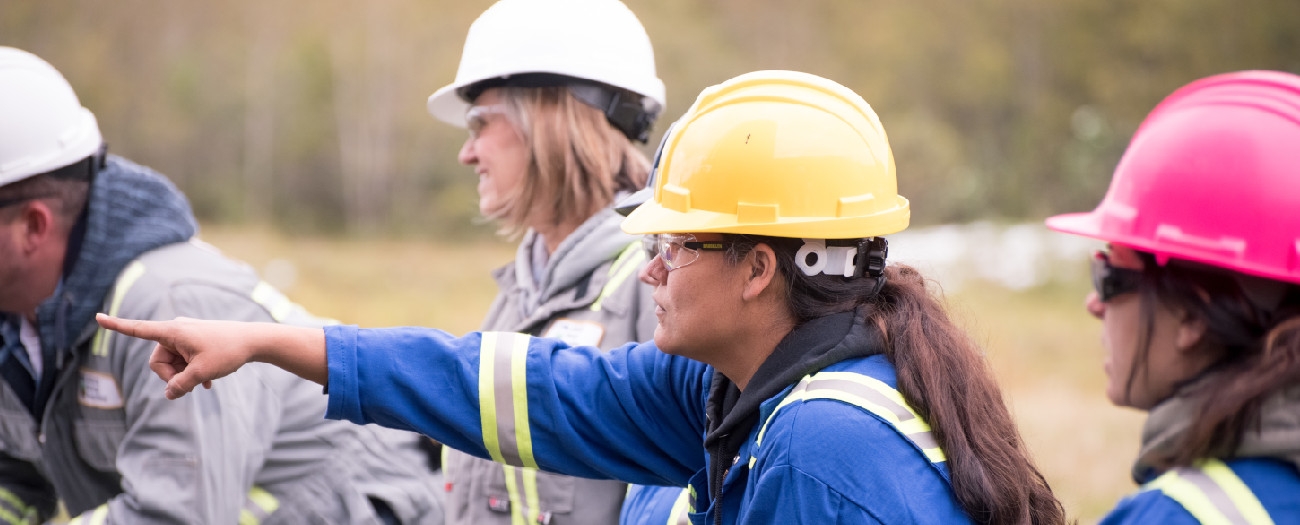AER staff team up with indigenous communities to conduct inspections
Cold Lake, Alberta - February 26, 2019Listen to the audio version of this story.
The notion that “teamwork makes the dream work” is often instilled in us when we’re children. However, sometimes things shift as we mature. Some start flying solo, which becomes a preferred method of work. All too often we can get caught up in our own processes.
Joint inspections are something the Alberta Energy Regulator (AER) has done with indigenous communities for a long time. But just like our matured individual work habits, the AER found itself flying solo a little too often. It wasn’t intentional. It’s just how things have been done. But when we know better, we do better, which is why we’re working to continue these types of inspections and invite community members to attend.
Last fall, members of the Cold Lake First Nations (CLFN) spent two days with AER inspectors learning both theory (Oil and Gas 101) and spending a day in the field. Donning safety gear, the CFLN members put their new-found knowledge to the test and head into the field with AER inspectors.
Sean Humphreys, an AER field inspector who both presented the classroom portion and lead the hands-on second day, says, “The joint inspections are important to us because they allow us to provide communities with knowledge on the industry operations both in theory and in practice by going out into the field.”
Humphreys has seen an increase in the level of engagement during the field inspections and says the experience has strengthened working relationships with these communities. “The sharing of information goes both ways, and these communities help inspection staff better understand historical land bases and the legislation that governs their use.”
Out in the Field
During their day in field, participants saw firsthand what operational noncompliance looks like on oil and gas sites, which was unsettling for the group.
“I was disappointed because of how neglectful work crews on the Nation have become,” said April Janvier, a corporate service manager with the Cold Lake First Nations Lands and Resources department. “We all just assume things are getting done how they should be. We hadn’t put a second thought into the details or the procedures.”
While Janvier was taken aback by the lack of care displayed in her backyard, she felt that what she learned had given her the right knowledge to be able to take action, share important information with her community, and help make changes.
“It’s disheartening that these incidents are taking place when we can make the change,” said Janvier. “We just need to adapt and adjust the way we approach and handle certain situations.”
As with all inspections, AER inspectors alerted the companies to the noncompliances identified during the site visits. The companies addressed these and gave an overview of their plans to ensure that the noncompliances wouldn’t be repeated and aren’t happening at other sites they operate.
Bringing it Home
So far, these joint inspections have prompted feedback from those who’ve learned from their experience and from AER staff alike. Participants are invited to partake in follow-up inspections to the same sites from the second day in the field. The AER is also organizing inspections of sites off of reserve land with the group for comparison.
One important lesson participants walked away with is that everyone is encouraged to report incidents or to bring concerns to the AER when it comes to energy development. There doesn’t need to be a blowout or a spill to call the AER.
“We had a lot of questions for the AER team, and I felt very comfortable with expressing my concerns, which was really important to me,” said Janvier. “It’s my community. I want the best for the people who live here.”
Anna de Souza, Writer
Luke Spencer, Digital Media
Jennifer Wagner, Narrator


